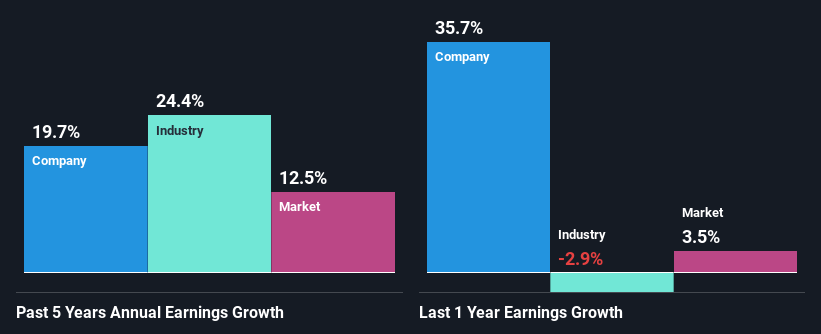Should Weakness in TMC Life Sciences Berhad's (KLSE:TMCLIFE) Stock Be Seen As A Sign That Market Will Correct The Share Price Given Decent Financials?
With its stock down 6.3% over the past month, it is easy to disregard TMC Life Sciences Berhad (KLSE:TMCLIFE). However, the company's fundamentals look pretty decent, and long-term financials are usually aligned with future market price movements. Particularly, we will be paying attention to TMC Life Sciences Berhad's ROE today.
ROE or return on equity is a useful tool to assess how effectively a company can generate returns on the investment it received from its shareholders. In simpler terms, it measures the profitability of a company in relation to shareholder's equity.
See our latest analysis for TMC Life Sciences Berhad
How Is ROE Calculated?
The formula for return on equity is:
Return on Equity = Net Profit (from continuing operations) ÷ Shareholders' Equity
So, based on the above formula, the ROE for TMC Life Sciences Berhad is:
6.5% = RM57m ÷ RM877m (Based on the trailing twelve months to December 2023).
The 'return' is the income the business earned over the last year. That means that for every MYR1 worth of shareholders' equity, the company generated MYR0.07 in profit.
What Has ROE Got To Do With Earnings Growth?
Thus far, we have learned that ROE measures how efficiently a company is generating its profits. Based on how much of its profits the company chooses to reinvest or "retain", we are then able to evaluate a company's future ability to generate profits. Generally speaking, other things being equal, firms with a high return on equity and profit retention, have a higher growth rate than firms that don’t share these attributes.
TMC Life Sciences Berhad's Earnings Growth And 6.5% ROE
At first glance, TMC Life Sciences Berhad's ROE doesn't look very promising. We then compared the company's ROE to the broader industry and were disappointed to see that the ROE is lower than the industry average of 11%. Although, we can see that TMC Life Sciences Berhad saw a modest net income growth of 20% over the past five years. We reckon that there could be other factors at play here. For example, it is possible that the company's management has made some good strategic decisions, or that the company has a low payout ratio.
As a next step, we compared TMC Life Sciences Berhad's net income growth with the industry and found that the company has a similar growth figure when compared with the industry average growth rate of 24% in the same period.
The basis for attaching value to a company is, to a great extent, tied to its earnings growth. It’s important for an investor to know whether the market has priced in the company's expected earnings growth (or decline). By doing so, they will have an idea if the stock is headed into clear blue waters or if swampy waters await. If you're wondering about TMC Life Sciences Berhad's's valuation, check out this gauge of its price-to-earnings ratio, as compared to its industry.
Is TMC Life Sciences Berhad Using Its Retained Earnings Effectively?
In TMC Life Sciences Berhad's case, its respectable earnings growth can probably be explained by its low three-year median payout ratio of 15% (or a retention ratio of 85%), which suggests that the company is investing most of its profits to grow its business.
Besides, TMC Life Sciences Berhad has been paying dividends for at least ten years or more. This shows that the company is committed to sharing profits with its shareholders.
Summary
Overall, we feel that TMC Life Sciences Berhad certainly does have some positive factors to consider. Even in spite of the low rate of return, the company has posted impressive earnings growth as a result of reinvesting heavily into its business.
Have feedback on this article? Concerned about the content? Get in touch with us directly. Alternatively, email editorial-team (at) simplywallst.com.
This article by Simply Wall St is general in nature. We provide commentary based on historical data and analyst forecasts only using an unbiased methodology and our articles are not intended to be financial advice. It does not constitute a recommendation to buy or sell any stock, and does not take account of your objectives, or your financial situation. We aim to bring you long-term focused analysis driven by fundamental data. Note that our analysis may not factor in the latest price-sensitive company announcements or qualitative material. Simply Wall St has no position in any stocks mentioned.

 Yahoo Finance
Yahoo Finance 
